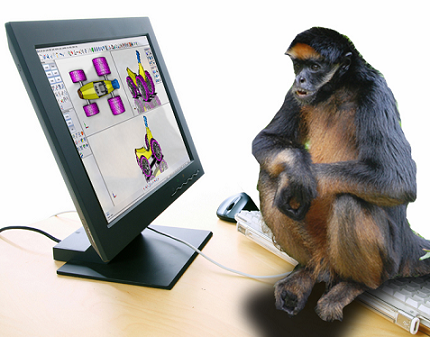Strategic Philanthropy
 My thanks to Minnesota Business magazine who printed my guest article Strategic Philanthropy in the December 2013 issue.
My thanks to Minnesota Business magazine who printed my guest article Strategic Philanthropy in the December 2013 issue.
 My thanks to Minnesota Business magazine who printed my guest article Strategic Philanthropy in the December 2013 issue.
My thanks to Minnesota Business magazine who printed my guest article Strategic Philanthropy in the December 2013 issue.
 The self-assessment tool that I reproduced in my last post, developed by workplace productivity experts Julian Birkinshaw and Jordan Cohen, is a variant of the classic Start/Stop/Continue exercise. Birkinshaw and Cohen adapted the exercise to help knowledge workers make “small but significant changes to their day-to-day schedules.”
The self-assessment tool that I reproduced in my last post, developed by workplace productivity experts Julian Birkinshaw and Jordan Cohen, is a variant of the classic Start/Stop/Continue exercise. Birkinshaw and Cohen adapted the exercise to help knowledge workers make “small but significant changes to their day-to-day schedules.”
In the Harvard Business Review article, “Make Time for the Work that Matters,” (9/13), the authors describe how Cohen worked with 15 executives at Pfizer to implement the tool, achieving “remarkable results.” They describe their process as follows:
Their research suggests that at least one-quarter of a typical knowledge worker’s activities fall into either the “not that important to you or the firm” category or the “relatively easy to drop” category. On this basis, they surmise that most workers should be able to free up to 10 hours per week with no negative impact on productivity—leaving valuable time for more mission-critical tasks.
In my experience, deciding whether to drop, delegate or redesign a task is where this process can fall apart if not done carefully. The authors recommend sorting the low-value tasks into three categories: quick kills (things you can stop doing now with no negative effects), off-load opportunities (tasks that can be delegated with minimal effort), and long-term redesign (work that needs to be restructured or overhauled).
They write that, at Pfizer anyway, keys to successfully working this process included “reflecting carefully on your real contributions,” asking ‘should I be doing this in the first-place?’ and ‘can my subordinate do this?’”
Offloading tasks was the most challenging aspect for many of the Pfizer executives. They had to learn when to delegate and how to continue to “push, prod and chase.” Even so, they delegated from 2% to 20% of their work with no decline in productivity.
So what did these executive do with all their new-found time? They were advised to write down two or three they should have been doing but were not, and to keep a log to assess whether they were using their now more accommodating schedule in the best possible way.
Some of the study participants were able to go home earlier, which the authors believed probably made them happier and more productive the next day. Some reported that their time “was swallowed up by unforeseen events, but more than half reclaimed the extra time to do better work.”
The authors counseled that the last step, committing to the new plan, should be shared with a boss, colleague or mentor. “Without this step, it’s all too easy to fall back into bad habits,” they warn.
In summary, Birkinshaw and Cohen write,
“With relatively little effort and no management directive, the small intervention we propose can significantly boost productivity among knowledge workers. Such shifts are not always easy, of course. . . but all participants (in the Pfizer study) agreed that the exercise was a ‘useful forcing mechanism’ to help them become more efficient, effective, and engaged employees and managers. To do the same, you don’t need to redesign any parts of an organization, reengineer a work process, or transform a business model. All you have to do is ask the right questions and act on the answers. After all, if you’re a knowledge worker, isn’t using your judgment what you were hired for?”
In my next post I will share how Intertech keeps the focus on the work that matters.
 Since we all have the same number of hours in a day, working as efficiently as possible is no brainer. But how? Business productivity experts Julian Birkinshaw and Jordan Cohen in the September issue of Harvard Business Review provide a self-assessment score card for identifying low-value tasks. I’ve replicated it below for discussion purposes. Check back for my next post to learn how it’s helping some organizations win the race against the clock.
Since we all have the same number of hours in a day, working as efficiently as possible is no brainer. But how? Business productivity experts Julian Birkinshaw and Jordan Cohen in the September issue of Harvard Business Review provide a self-assessment score card for identifying low-value tasks. I’ve replicated it below for discussion purposes. Check back for my next post to learn how it’s helping some organizations win the race against the clock.
Self-Assessment: Identifying Low-Value Tasks
Developed by Julian Birkinshaw and Jordan Cohen (HBR, 9/13)
Make a list of everything you did yesterday or the day before, divided into 30- or 60-minute chunks. For each task, ask yourself four questions:
How valuable is this activity to the firm?
Suppose you’re updating your boss or a senior executive on your performance. Would you mention this task? Would you be able to justify spending time on it?
| It contributes in a significant way towards the company’s overall objectives | 4 |
| It contributes in a small way | 3 |
| It has no impact, positive or negative | 2 |
| It has a negative impact | 1 |
To what extent could I let this go?
Imagine that because of a family emergency, you arrive at work two hours late and have to prioritize the day’s activities. Which category would this activity fall in?
| Essential: This takes top priority | 4 |
| Important: I need to get this done today | 3 |
| Discretionary: I’ll get to it if time allows | 2 |
| Unimportant/optional: I can cut this immediately | 1 |
How much personal value do I get from doing it?
Imagine that you’re financially independent and creating your dream job. Would you keep this task or jettison it?
| Definitely keep: it’s one of the best parts of my job | 5 |
| Probably keep: I enjoy this activity | 4 |
| Not sure: This task has good and bad points | 3 |
| Probably drop: I find this activity somewhat tiresome | 2 |
| Definitely jettison: I dislike doing it | 1 |
To what extent could someone else do it on my behalf?
Suppose you’ve been tapped to handle a critical, fast-track initiative and have to assign some of your work to colleagues for three months. Would you drop, delegate or keep this task?
| Only I (or someone senior to me) can handle this task | 5 |
| This task is best done by me because of my particular skill set and other, linked responsibilities | 4 |
| If structured properly, this task could be handled satisfactorily by someone junior me | 3 |
| This task could easily be handled by a junior employee or outsourced to a third party | 2 |
| This task could be dropped altogether | 1 |
Now tally your score. A low total score (10 or lower) reflects a task that is a likely candidate for delegation or elimination. If you subscribe to Harvard Business Review, go to “hbr.org/assessments/work-that-matters” for an interactive assessment tool to see how you stack up and to get advice for improved productivity.
 How much work can you get done before shifting your attention to the other parts of your day? How many tasks can you mark off your “to do” list before 5 or 6 p.m.? How do you know if you’re even focusing on the right stuff?
How much work can you get done before shifting your attention to the other parts of your day? How many tasks can you mark off your “to do” list before 5 or 6 p.m.? How do you know if you’re even focusing on the right stuff?
If you manage others, it also can be tough to know if your employees are using their time efficiently. “A manager may suspect that an employee is spending his time inefficiently but be hard-pressed to diagnose the problem, let alone come up with a solution,” writes London Business School strategy professor Julian Birkinshaw and productivity expert Jordan Cohen in the September edition of Harvard Business Review.
These guys know a thing or two about work productivity. Birkinshaw is the author of “Becoming a Better Boss” and Cohen is the recipient of the 2010 grand prize from the Management Innovation eXchange (MIX) for his employee productivity work with Pfizer.
They describe a process that knowledge workers can use to “make time for the work that matters.” It’s a topic worth thinking about, considering the research showing that by their own admission “knowledge workers spend a great deal of their time—an average of 41 percent—on discretionary activities that offer little personal satisfaction and could be handled competently by others.”
It’s puzzling. If workers understand that much of the work they’re doing can be better handled by someone, presumably less skilled, than themselves, why do they keep doing it?
The authors hypothesize that people instinctively “cling to tasks that make (them) feel busy and thus important, while (their) bosses, constantly striving to do more with less, pile on as many responsibilities as (employees) are willing to accept.”
They also assign some of the blame for less than optimal productivity to lean-to-the-bone organizations that expect higher level employees to take on some low-value tasks that distract them from more important work.
How can knowledge workers be more productive? How can managers be more strategic in encouraging employee productivity? Check back for my next few posts to find out what productivity experts Julian Birkinshaw and Jordan Cohen recommend. I’ll also share how Intertech manages the time-task-value conundrum.